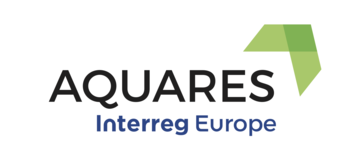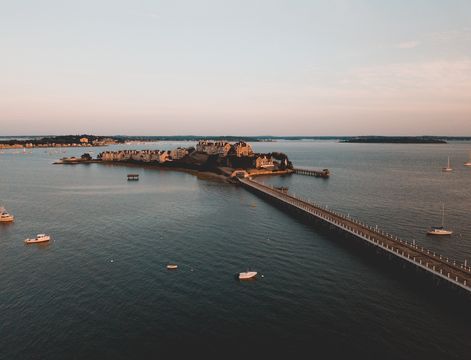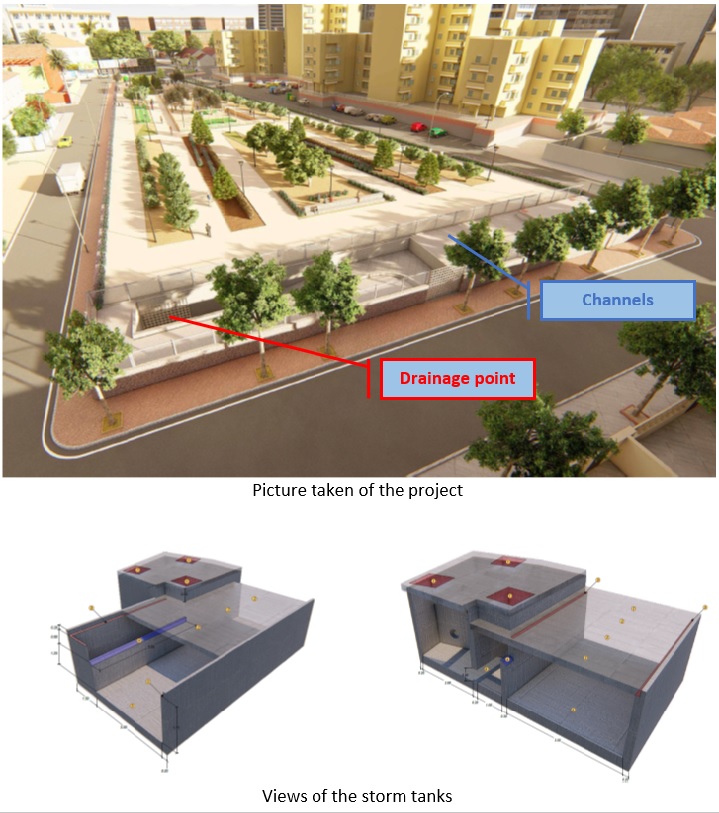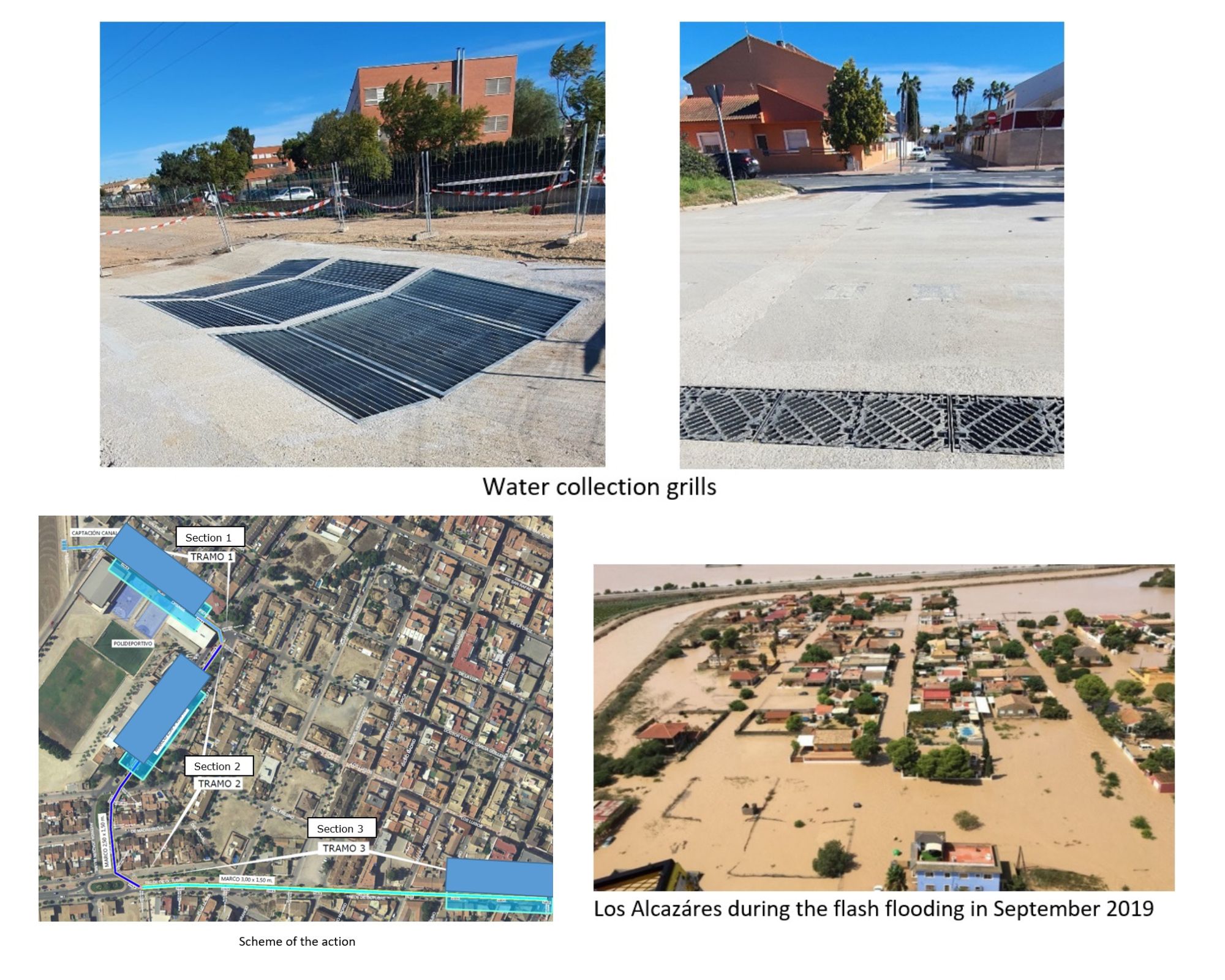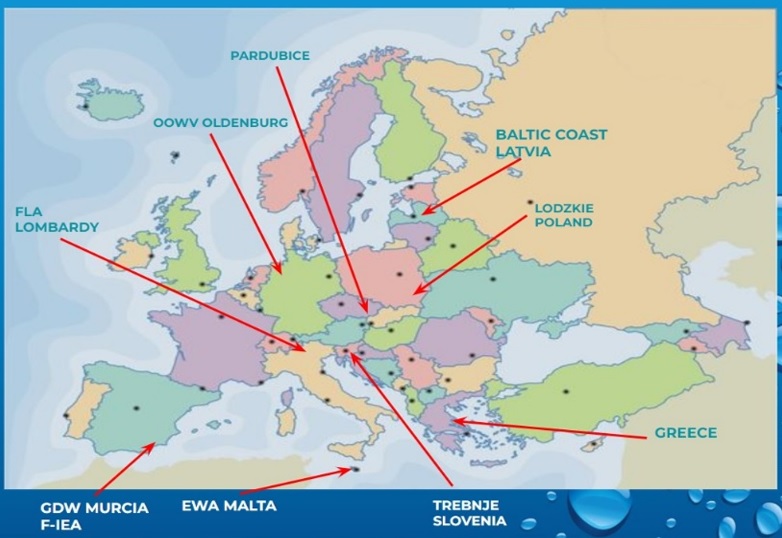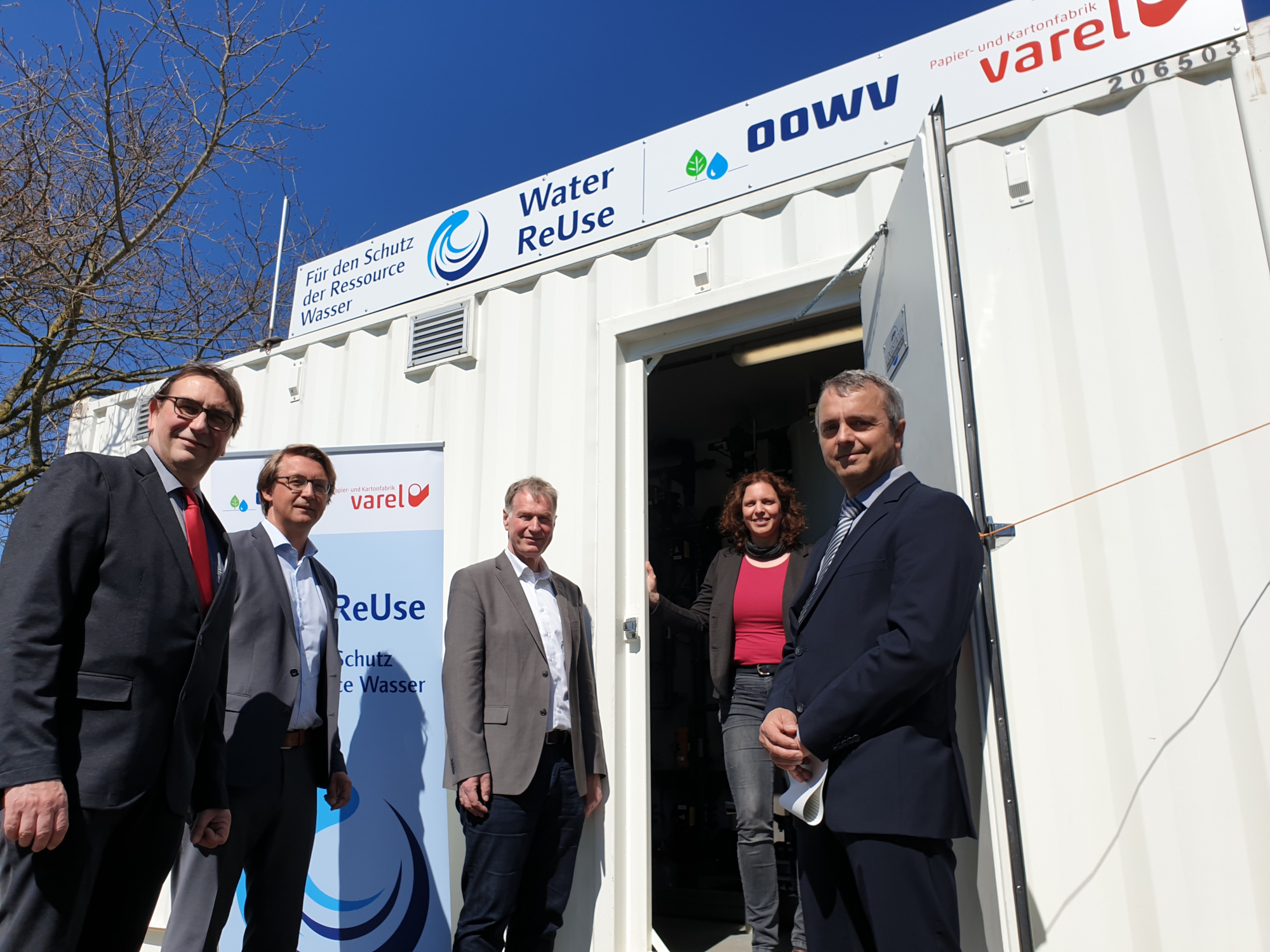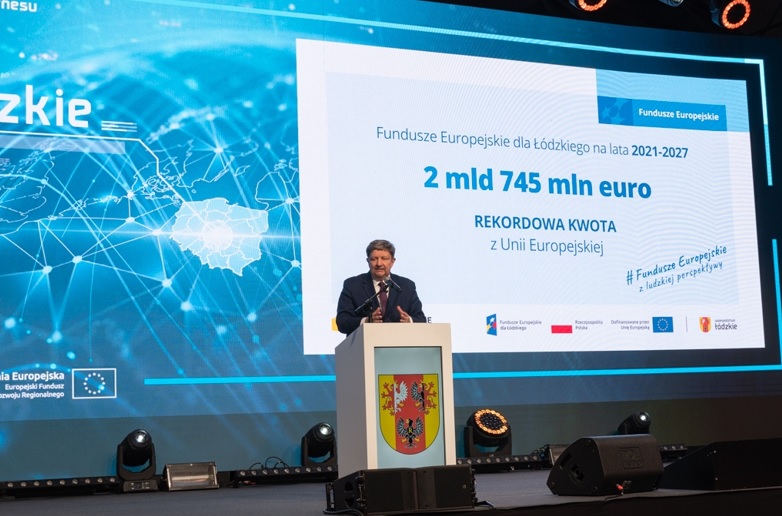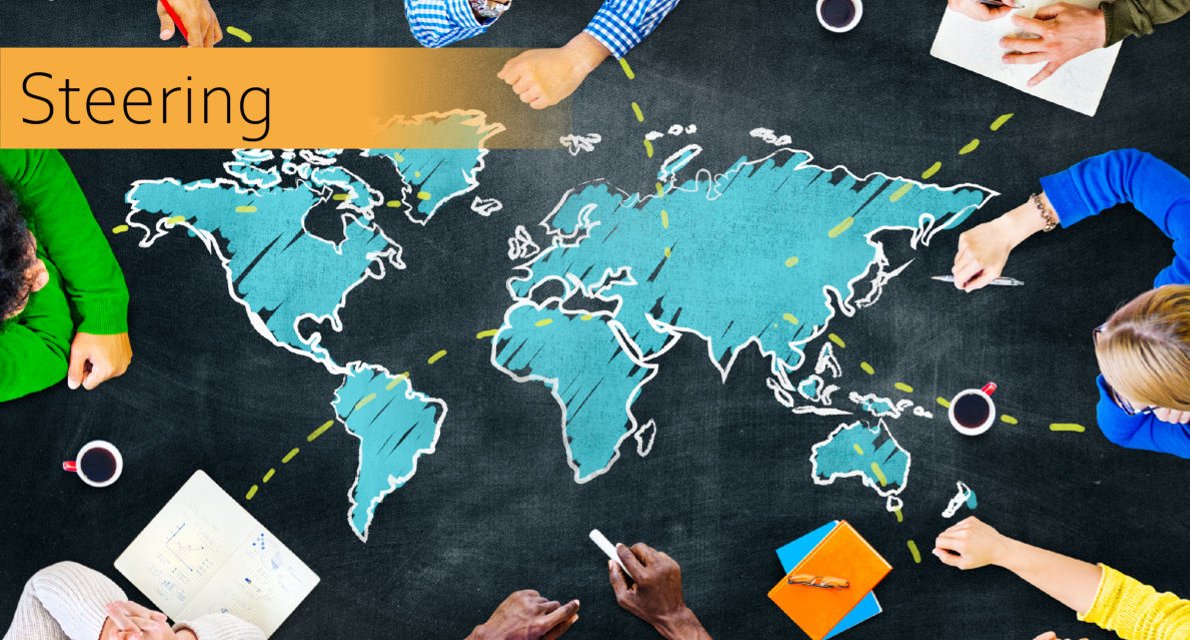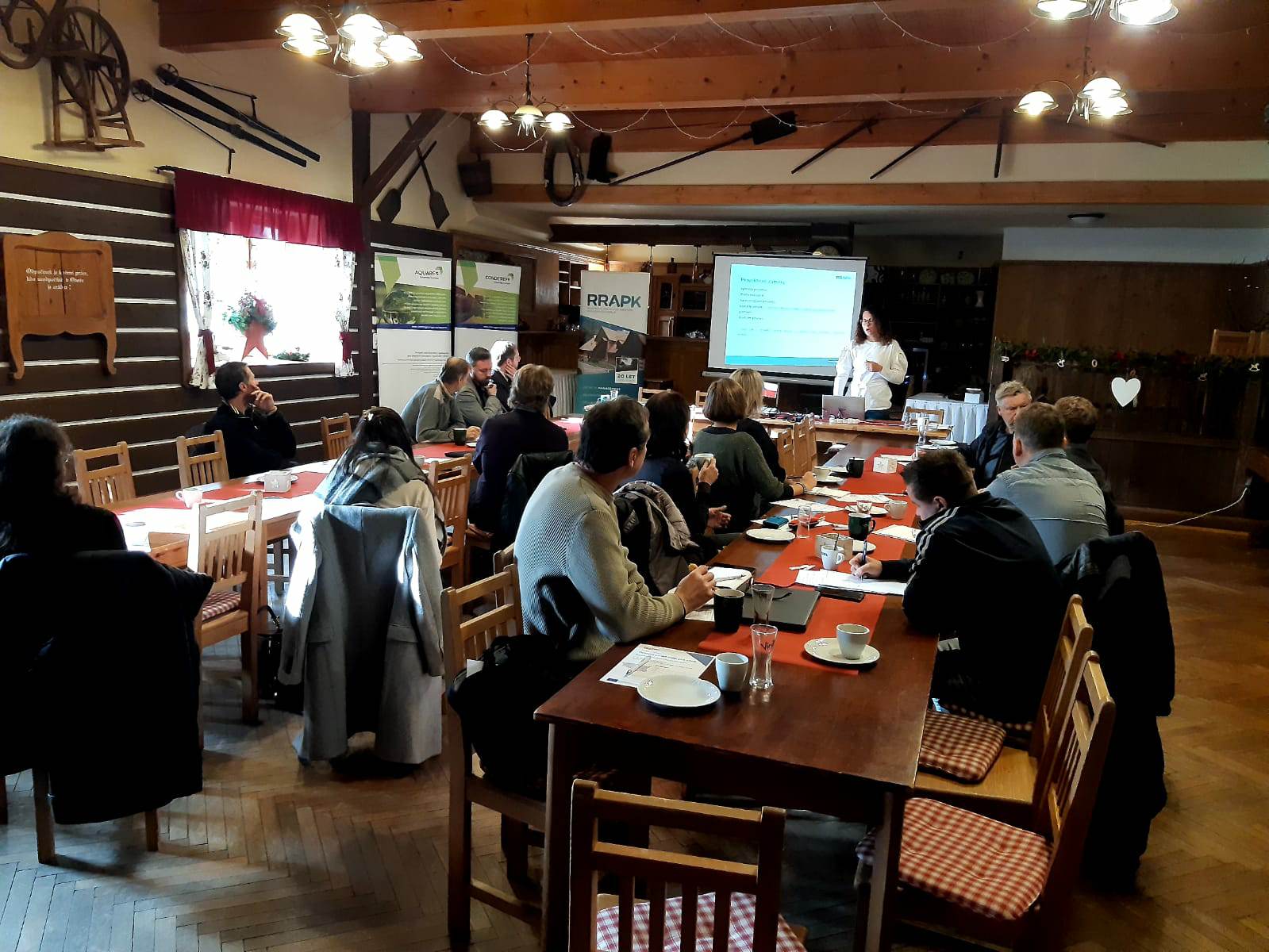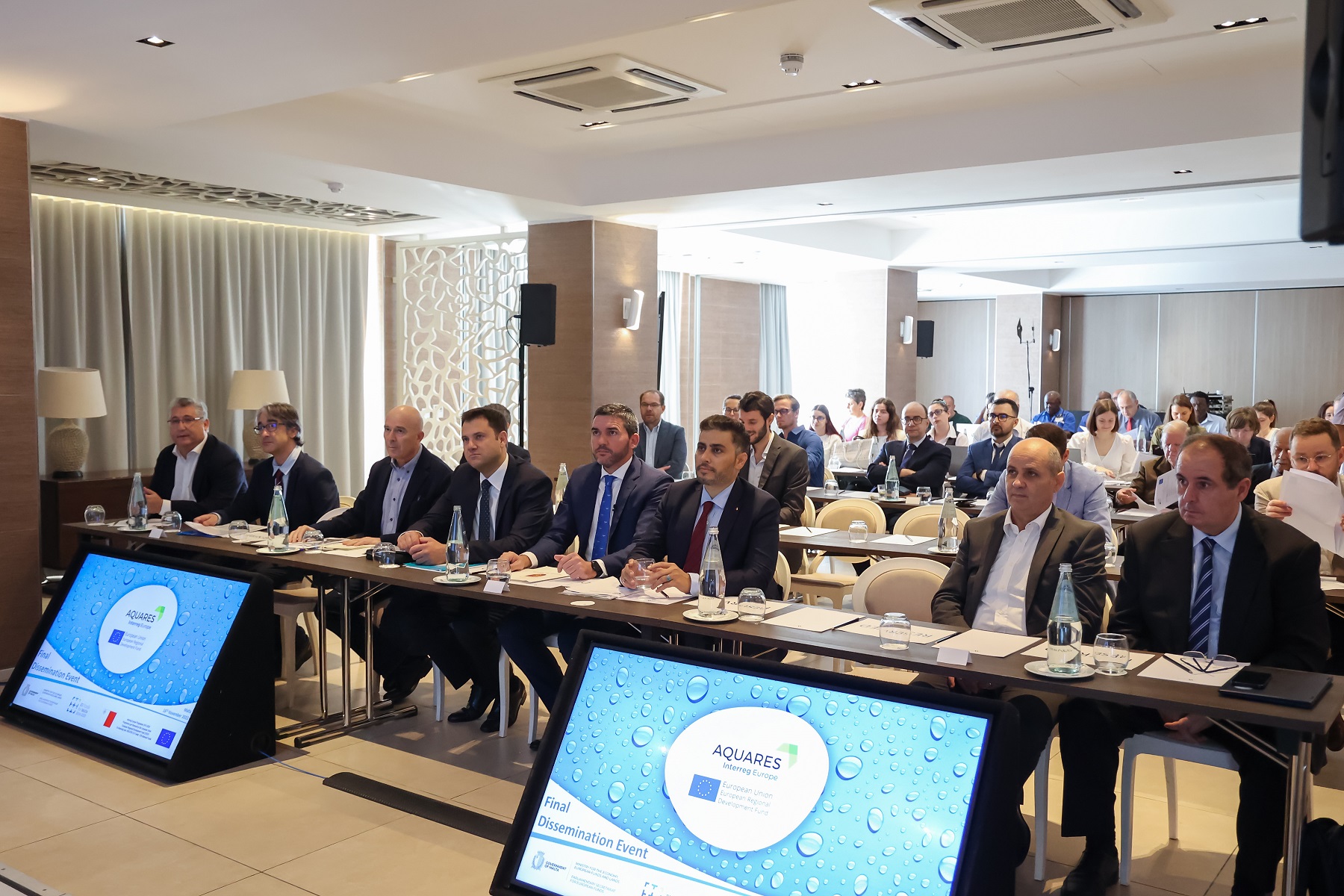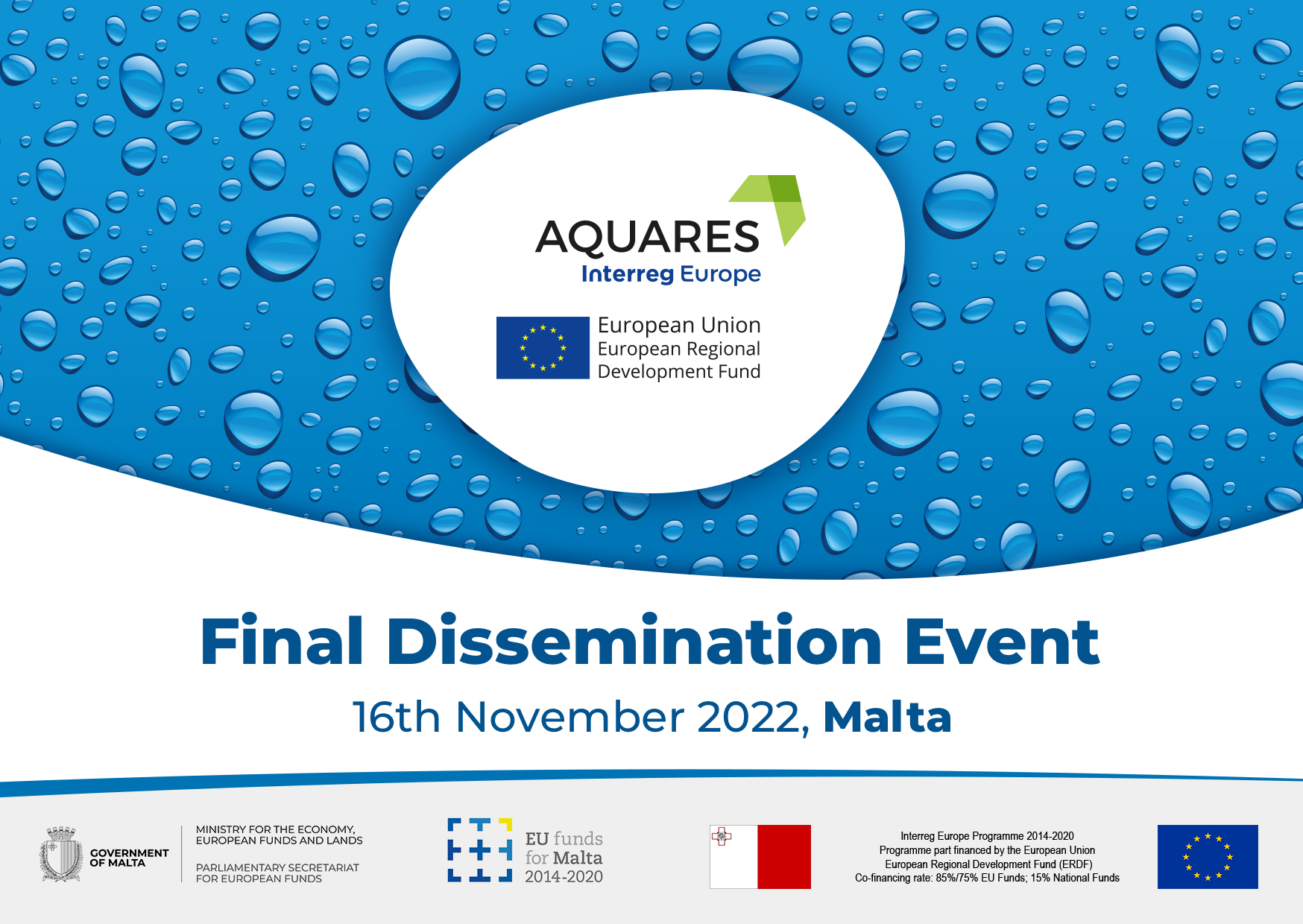On 16 and 17 October 2019, experts from the AQUARES project partnership countries, i.e. Spain, Czech Republic, Malta, Latvia, Slovenia, Italy and Germany, learned about innovative water treatment technologies implemented in the łódzkie voivodeship. At the beginning, Dr. Sebastian Szklarek from the European Regional Centre for Ecohydrology of the Polish Academy of Sciences presented the hydrological characteristics of the region.
On the first day of the study visit, the participants visited the Municipal Water and Sewage Treatment Plant in Sieradz and the "Biliński" Textile Factory in Konstantynow Lodzki.
Treatment Plant in Sieradz provides services for the inhabitants of the Sieradz agglomeration covering the City of Sieradz and the surrounding rural areas of the Municipality of Sieradz. During two-stage treatment of water collected from sources (iron and manganese removal) using DynaSand filters, so called rinse water is created. The applied technologies purify the rinse water, separating and thickening the sludge, and the supersedimentary water is returned to the filter again. In other words, the rinse water is cleaned of dense impurities and the recovered water is returned to the treatment again. It is estimated that the technology used minimises the use of rinse water by approximately 10%. The technology used in MPWiK in Sieradz was implemented in cooperation with AWP Nordic Products Sp. z o.o. from Łódź.
The "Biliński" Textile Factory located in Konstantynow Lodz employs nearly 300 people. The plant specializes in dyeing, bleaching, finishing, as well as digital printing of fabrics and knitwear. Over 50% of sales is for export, the main direction is Scandinavian countries, although the customers are also the Baltic States and the Czech Republic, Slovakia, Germany, Great Britain and Italy.
The project of sewage treatment and closing water circuits in the "Biliński" Textile Plant was carried out on the basis of BAT (Best Available Techniques) guidelines - the best available techniques for the textile industry (European Commission, 2003).
The BAT guidelines provided for the following stages of work:
1. characterization and division of sewage into streams in terms of their biodegradability,
2. design of a treatment system for the relevant waste water streams,
3. examine the possibility of using treated water for production processes.
The plant distinguished two main streams of wastewater:
1. wastewater susceptible to biological treatment,
2. non-biodegradable waste water destined for chemical wastewater treatment plants.
Low-loaded sewage (so called rinse water) is directed to biological treatment. The water is treated to a minimum, technologically acceptable level of purity and reused in production processes. Thanks to this, about 40-50% of water intake is reused. Wastewater which is not suitable for reuse, i.e. which could cause adverse effects on the biological treatment plant, is also treated with the coagulation method and flocculation, and then directed to the sewerage system. The latest project of the company is based on the separation of colored sewage, characterized by high salinity (salt content reaching 80g/ml), very high pH, strongly colored (impervious to light). After applying appropriate physico-chemical methods, the wastewater is treated to such an extent that it can be reused for staining.

